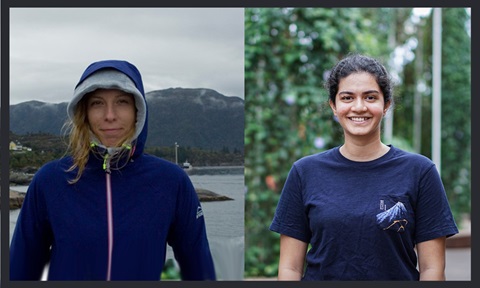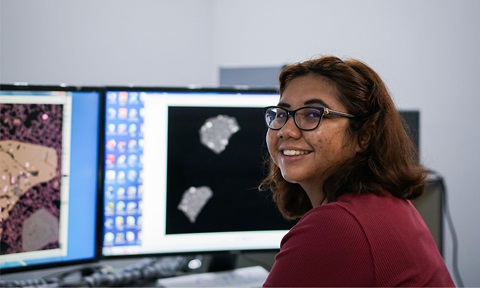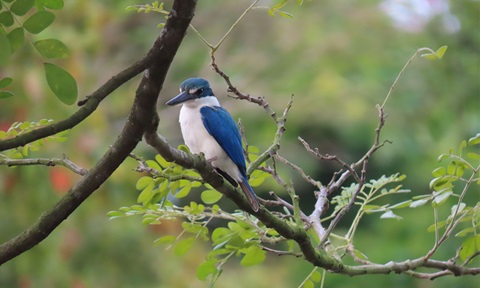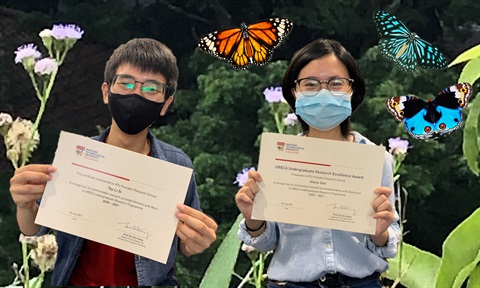Preventing future tsunami impact on major Asian ports by characterizing the Tohoku port response – new PhD thesis from ASE
 Left: Dr Constance Chua. Middle: devastation after the 2011 Tohoku event (shutterstock_646344703), Right: Japan earthquake 2011 (shutterstock_73128724).
Left: Dr Constance Chua. Middle: devastation after the 2011 Tohoku event (shutterstock_646344703), Right: Japan earthquake 2011 (shutterstock_73128724).
When Constance Chua started her research on evaluating tsunami risk to major ports in the South China Sea she thought it would be a small side project. Recently she defended her PhD thesis on the response of coastal infrastructure to tsunami impacts. We caught up with Dr Chua to find out more about her research, how she developed this interest, and her experience of doing a PhD at ASE.
Why did you choose to do a PhD, and how did you decide on your research area?
Someone once told me that there is a defining event (in terms of natural hazards) that inspired each generation of researchers. The 2011 Christchurch earthquake was such an event for me. Having studied in University of Canterbury (New Zealand), where the campus and the city were badly hit by the earthquake and aftershocks, I was able to witness not only the devastation but the fatigue of residents during the rebuilding and recovery period. It got me interested in natural hazards and disaster risk management. Fieldtrips to places such as Kaikoura and Franz Josef were an eye-opener. I was presented with the reality of the situation, i.e. the earthquake and tsunami threats that these townships were facing and the livelihood of the people who depended on tourism of these areas. These were no longer just textbook cases and I felt that an undergraduate degree has not yet equip me with the necessary knowledge to make a change.
My research topic came to me by chance! A research fellow, Linlin Li, in our group ( Coastal Lab at ASE, headed by Assoc Prof Adam Switzer) had a paper published where she found that many cities within the South China Sea basin are at risk of a tsunami from the Manila-trench. Yet, tsunami risk in this part of the world is generally underestimated and understudied. Linlin asked me if there would be a way to evaluate the risk to ports in this region since the South China Sea basin and the Southeast Asia region are home to some of the world’s busiest ports. I looked through literature and found almost no studies on tsunami impacts on ports. I thought that perhaps we could use the damage observations from the 2011 Great East Japan tsunami to understand more about the fragility of port structures against tsunami. What I thought would be a small side project turned into a full-scale PhD work!
How common are tsunami?
Tsunami are not uncommon but globally, their occurrences are considered infrequent. In the last two decades, there has only been over 20 known tsunami events globally, unlike tropical cyclones which can occur in a region many times a year. Therefore, with each event that happens, we learn something new about them and this is what makes them so interesting! For instance, prior to the 2011 tsunami in Japan, it was generally thought that reinforced concrete buildings would survive tsunami impacts.
Could tsunami become more common due to climate change?
Tsunami would not become more common with climate change, because they are generated by sudden displacement of a water body such as the sea or a lake. Tsunami are most commonly generated by earthquakes, which is not controlled by climate. However, their impacts can be made worse by rising sea level due to climate change. Tsunami that are generated by smaller magnitude earthquakes may not pose a threat to coastal cities at current sea level, but they may result in greater flooding at higher sea levels.
Which big ports in Southeast Asia are most vulnerable to tsunami?
Parts of the Southeast Asia region are at risk of tsunami from a number of sources including the Manila trench, Sumatra trench and the Java trench. Some of the world’s busiest ports are found in the Southeast Asia region and the South China Sea basin, such as Singapore, Manila and Ho Chi Minh. While Singapore would unlikely to be at risk of a tsunami, ports of Manila, Hong Kong and Kaohsiung are at risk of a tsunami from a Manila trench earthquake. Because tsunami in Southeast Asia is relatively understudied, there is still very little that we can say about the risk to ports in the region. Hopefully, more of the research that we are doing in NTU will be able to help us in the evaluation of these risks.
Thankfully, Singapore is not in the danger zone for tsunami, but as a major port, how can Singapore benefit from tsunami forecasts?
Singapore is the second busiest port in the world, and therefore, a disruption to any of the major ports within the region could impact Singapore through trade and affect the supply chain. Hong Kong, China and Indonesia are a few of Singapore’s greatest trade partners and therefore, an impact to these countries could significantly affect trade with Singapore. A tsunami forecast of the region could help us better plan and develop business continuity plans.
What are the most important things you have learnt from your PhD days?
One of the things I have learnt is that it is most important that you take ownership of your work. You are training to become an independent researcher during your PhD, try to master as much as possible every area of your thesis work. Be active in your learning!
What are your next steps?
I will be starting my new position as a research fellow with the Earth Observatory of Singapore. I will be part of the SEA2 program which is a big project that EOS has undertaken to improve our understanding of sea level and sea level extremes in Southeast Asia. I am quite excited to be part of this project, where I can apply some of my findings from my PhD to the Southeast Asia context.
Do you have any advice for prospective or new PhD students?
Well, I have many! I have thought about this a lot while I was writing my thesis in the last year. One advice would be that we can learn by making mistakes. We are not expected to be an expert in our field on the very first day of our PhD, so do not feel the need to hide your weaknesses. Definitely have the courage to ask and sometimes, you get a clearer and more straightforward answer than you would trying to find them through literature.
Making friends would also be an added bonus to your PhD life. I have made friends who have been very supportive of my endeavours. Through them, I have also learnt a lot about the field and about research in general. My friends have made my PhD life not only bearable but in fact, very enjoyable. These were some of the best years of my life. Ultimately, I would encourage everyone to make the most out of their PhD experience.
Constance Chua defended her PhD thesis on 4 June 2021. The title of her thesis is "Understanding the Response of Coastal Infrastructure to Tsunami Impacts".
By Anna Lagerstroem and Sophia SOH Fei Wen


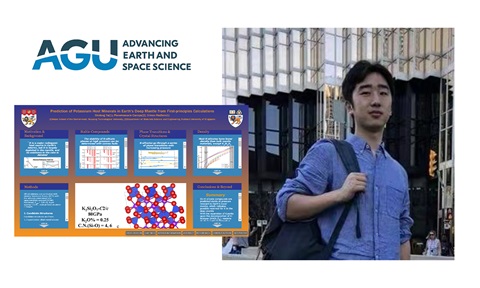
.tmb-listing.jpg?Culture=en&sfvrsn=31c2d3fa_1)
